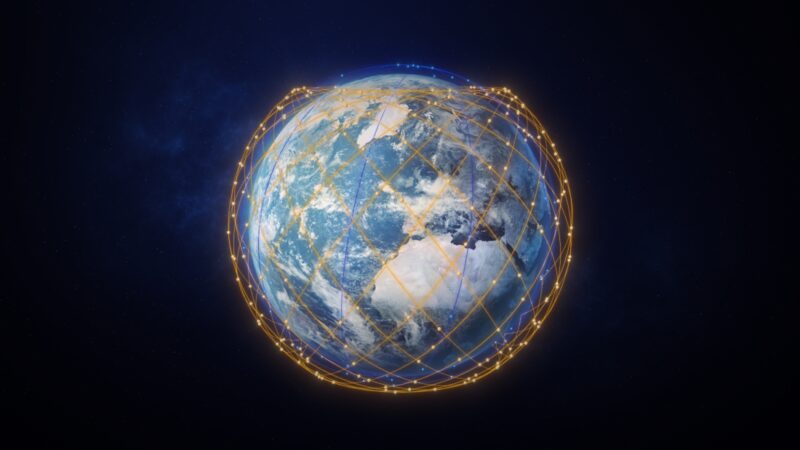Latest News

A rendering of Telesat’s Lightspeed constellation. Photo: Telesat/Thales Alenia Space
Funding for Telesat’s Lightspeed constellation is hitting some speed bumps as the Canadian operator reported delays in financing discussions with export credit agencies (ECA), and that it will likely need to secure additional funding to deal with increased costs.
Lightspeed is Telesat’s Low-Earth Orbit (LEO) constellation in the works. Earlier this year, Telesat downsized plans for the constellation due to inflation and supply chain issues from the planned 298 satellites to 188 with 10 in-orbit spares.
CEO Dan Goldberg gave an update on Friday in an investor call discussing the operator’s second quarter financial report. Goldberg said manufacturer Thales Alenia Space was delayed in delivering its final proposal for the constellation, which affects the timing of ECA discussions. Goldberg previously expected to have more information about ECA funding in this quarterly update, but Telesat just shared the final constellation proposal with ECA lenders earlier this week.
Goldberg now expects to sign a term sheet with ECA lenders by the end of the year. A term sheet will then take more time to finalize. Once the term sheet is signed, Telesat will “feel comfortable making meaningful expenditures moving forward with the program,” he said.
“What I thought we would know by now, I think we’ll know in a couple of months, sometime in Q4. [We hope to] have a good sense for where we are with the ECAs — is this thing coming together or not?” Goldberg said.
Inflation is likely driving the planned $5 billion cost up “hundreds of millions of dollars,” but less than 10% of the total cost, Goldberg said. The operator is looking to raise incremental financing to make up the difference, and discussions are underway.
Goldberg emphasized that Telesat has confidence in Thales, but said that Telesat is not locked in to its vendor selection.
“We think that Thales is the top vendor for advanced satellite constellations. But the reality is, we are operating in an inflationary environment, an environment where supply chains are stretched. Just look across the industry — everybody is getting delayed in their program,” Goldberg said. “But we’re not locked in. They’re a good prime contractor, I think they’ve got a great track record. But we’re not locked into Thales.”
“I’m comfortable where we are now,” he continued. “Our huge focus right now is getting this thing financed. Our objective is to get that done and to get going on construction of the program by the end of the year.”
Second Quarter Results
In the second quarter of 2022, Telesat reported consolidated revenue of $187 million, a decrease of $1 million compared to the same period in 2021. When adjusted for changes in foreign exchange rates, revenue declined 3% compared to 2021. The revenue decrease was primarily due to Dish’s partial renewal of a long-term direct-to-home (DTH) capacity agreement.
Operating expenses for the second quarter were $59 million, a decrease of $6 million from the same period in 2021, mostly because Telesat incurred higher professional fees last year during its process to go public.
Telesat’s net loss for the second quarter was $4 million, compared to net income of $53 million for the second quarter of 2021. The operator said this was mainly due to the U.S. dollar strengthening in Q2 versus weakening in the same period last year.
Contracted backlog stands at $1.9 billion, excluding Telesat Lightspeed’s backlog. Fleet utilization was at 86%.
Telesat raised 2022 guidance, and now expects its full year 2022 revenues to be between $740 million and $750 million. The previous range was between $720 million and $740 million. Goldberg said the change in guidance accounts for the Dish renewal and previous guidance included the possibility of non-renewal.
Get the latest Via Satellite news!
Subscribe Now